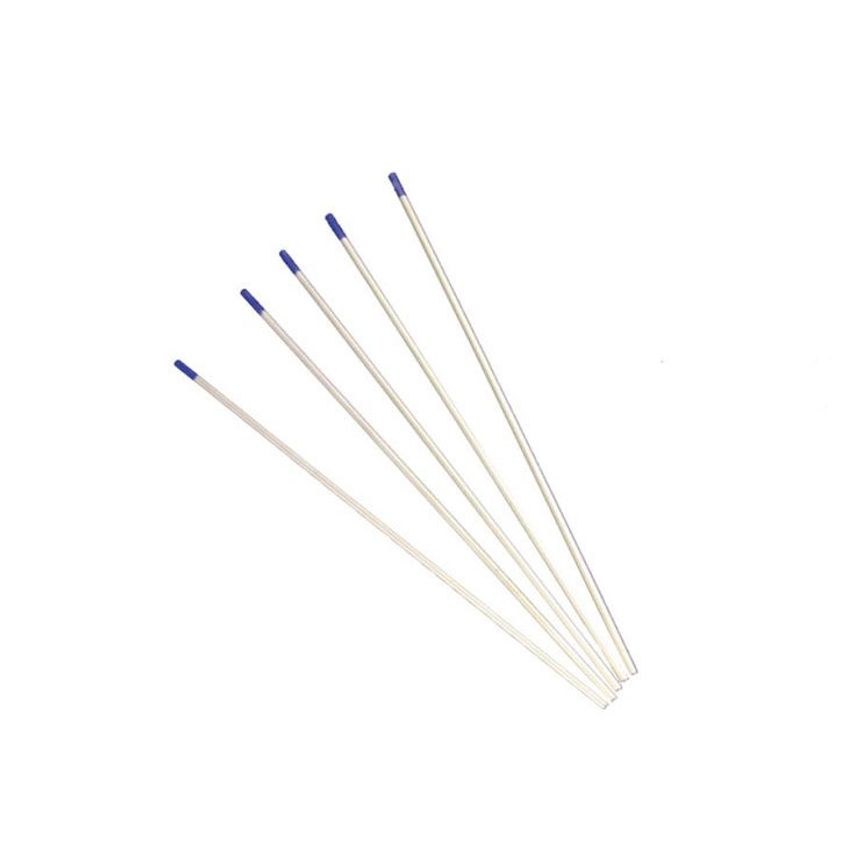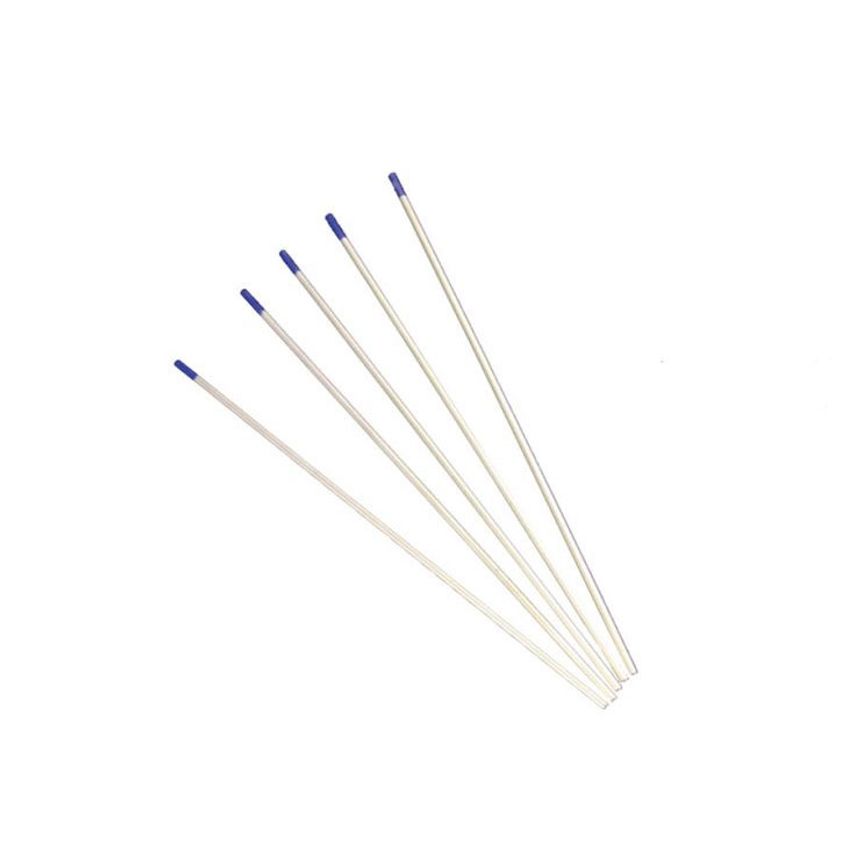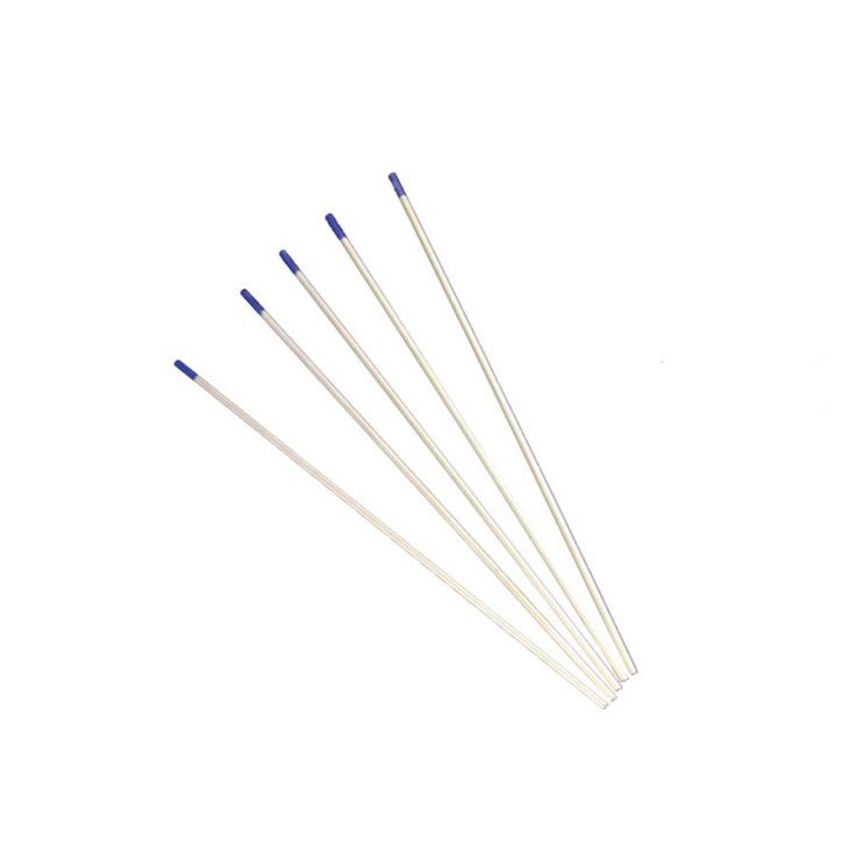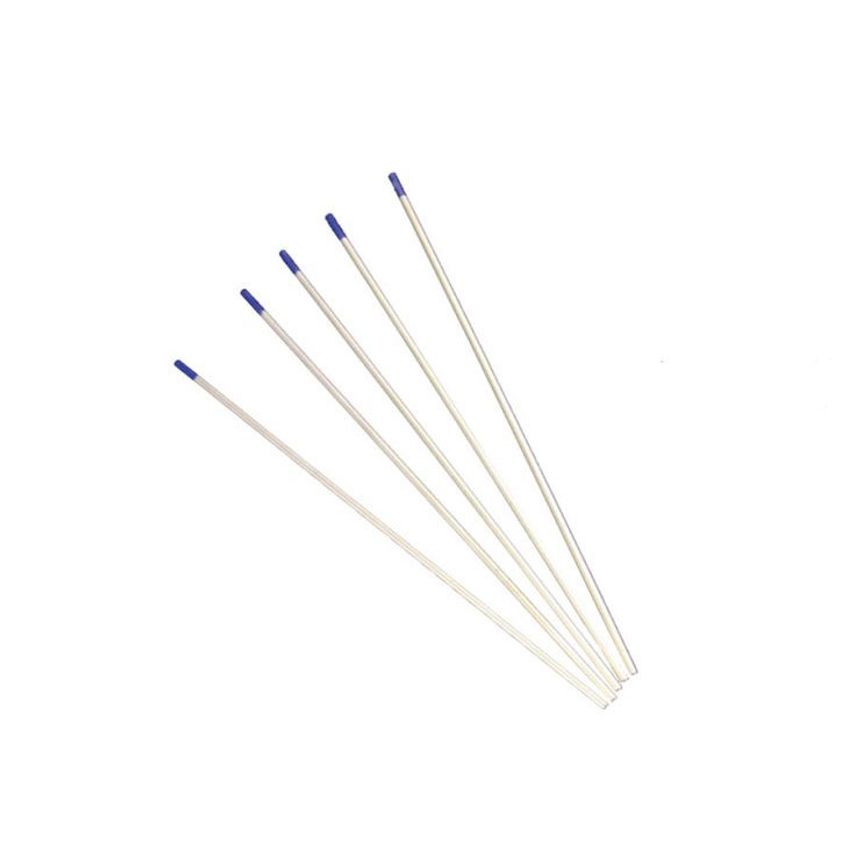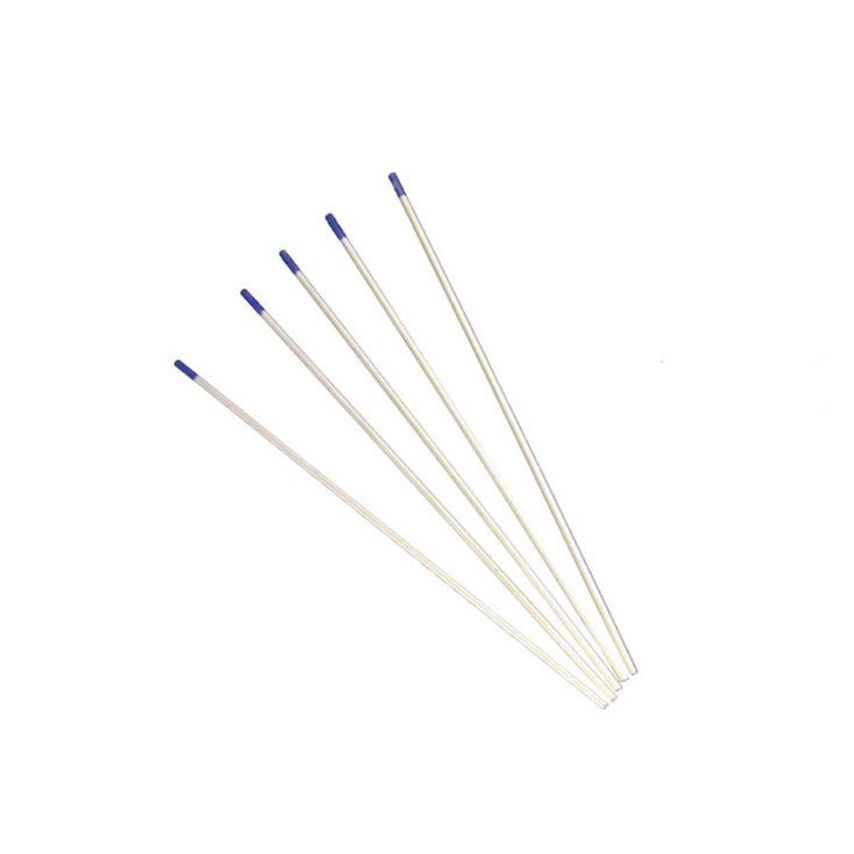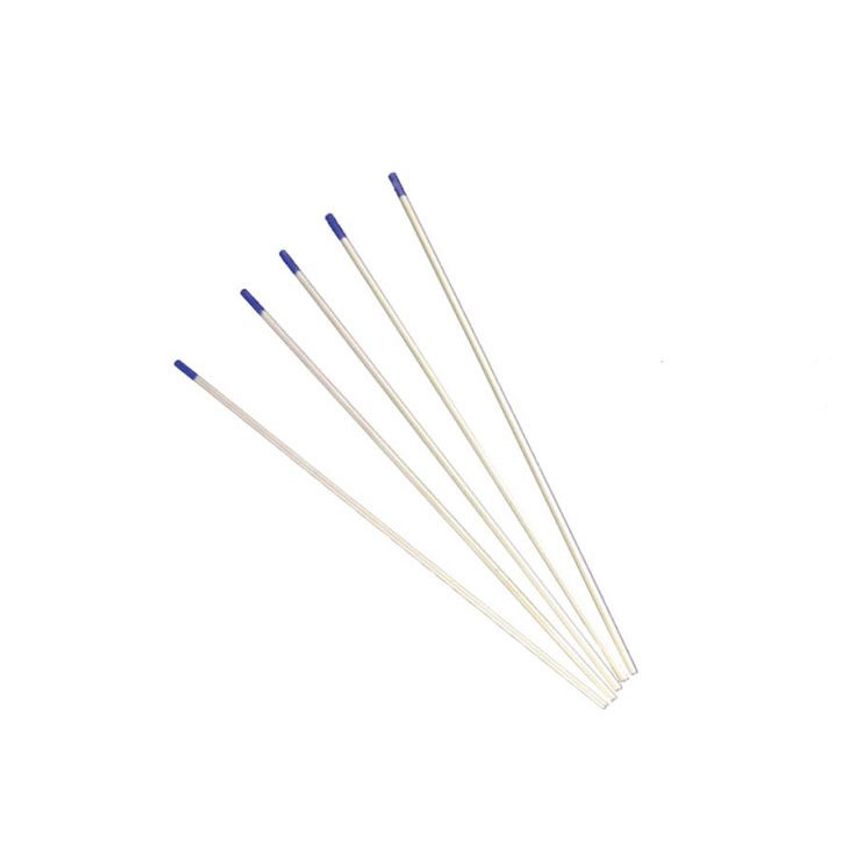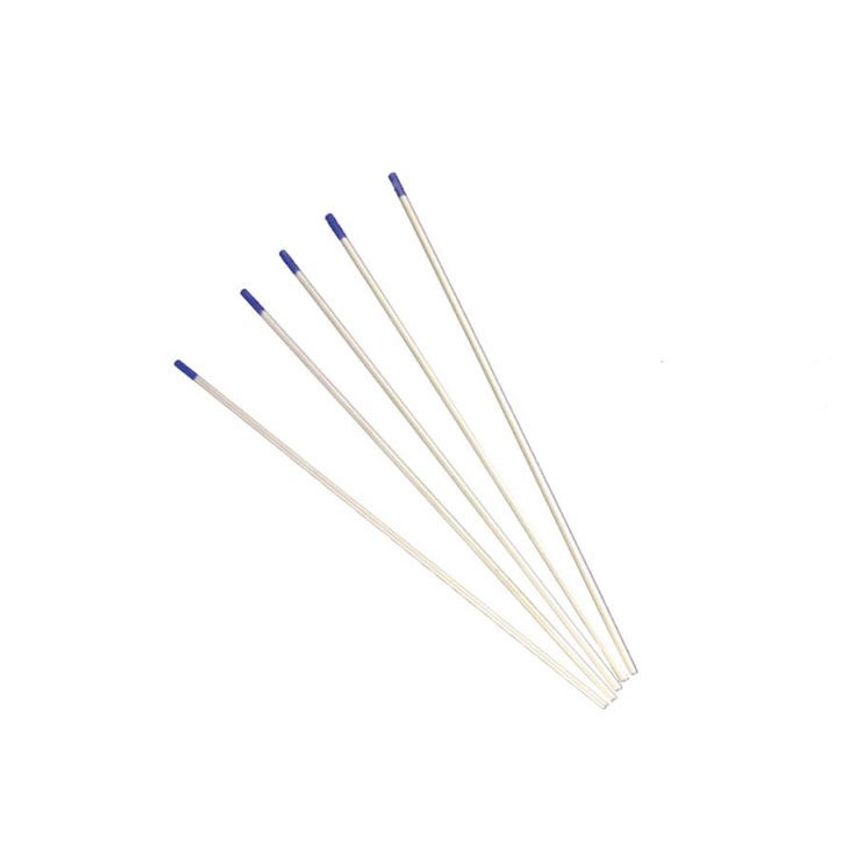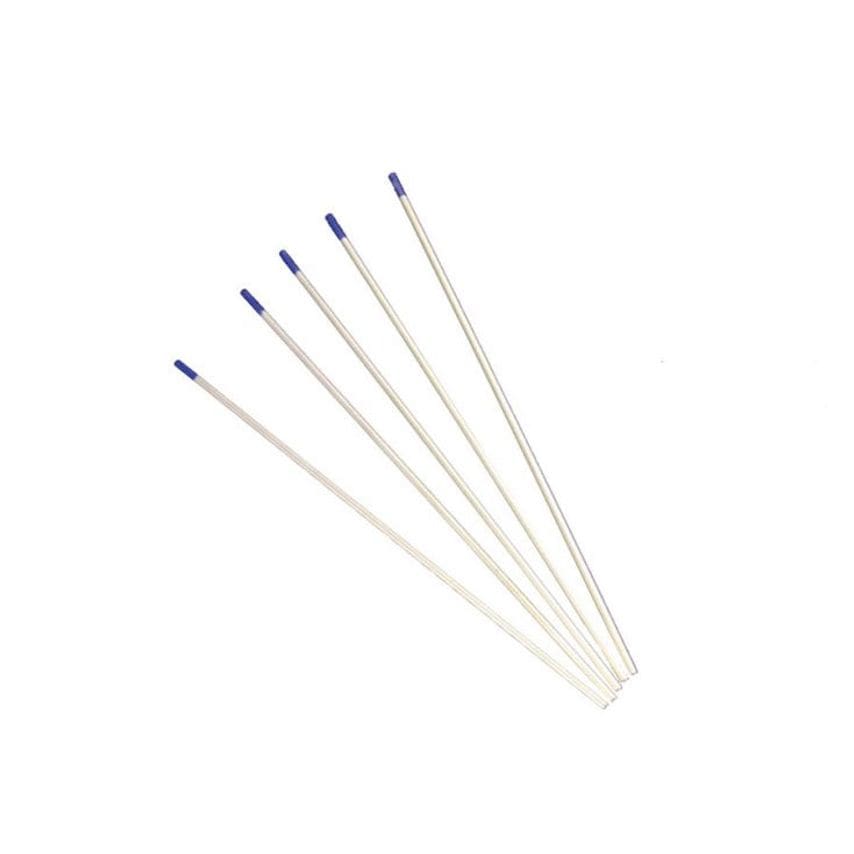Huntingdon Fusion Techniques Techweld MultiStrike Tungsten Electrodes (10pk) - 2. 4mm X 178mm
Huntingdon Fusion Techniques (HFT) MultiStrike Tungsten Electrodes are versatile, providing stable performance for welding steels, alloys (using DC), and aluminum (using AC) within the current range of 0-300 Amps. They outperform conventional 2% thoriated tungsten electrodes by offering up to 10 times the number of arc strikes under the same conditions. These electrodes are non-thoriated, non-radiotoxic, and non-carcinogenic.
Additionally, they lower working temperatures, resulting in narrower, lower heat input welds and extending the number of arc strikes before re-grinding is required. Developed with user safety in mind, Techweld MultiStrike Tungsten Electrodes are traceable through batch numbers and come in special packaging. Immediate delivery is available for these electrodes.
Pack of 10.
FAQs
1. We see and hear that there are other thoria-free ecological tungstens available at lower prices than MultiStrikes?
The MultiStrike trademark has become an international industry standard. When buying MultiStrike Tungsten Electrodes you are purchasing a consistent, guaranteed, reliable, traceable product which will not vary and let you down in production. Many cheaper tungstens may have unreliable sources. The MultiStrike Tungsten Electrodes tip colour is known as House Blue, immediately distinguishable from any other tungsten and is part of the Trademark of Huntingdon Fusion Techniques HFT.
2. What is in MultiStrike Tungsten Electrodes to make them so good?
MultiStrike Tungsten Electrodes contain a blend of rare earth dopants to replace thoria. Our dopants are not radioactive and they are mixed in accurate proportions using statistical proportional control procedures, fully computerised to ensure that the tungstens are made to the same high standards every time.
3. What materials do you use inside MultiStrike Tungsten Electrodes?
The exact ingredients of MultiStrike Tungsten Electrodes are part of our intellectual property gained by extensive research and development to bring a quality product to the market place that is totally traceable, reliable, and repeatable.
4. Can MultiStrike Tungsten Electrodes be used to weld aluminum with AC welding?
Yes, MultiStrike Tungsten Electrodes are used widely and successfully for welding aluminum.
5. I tried MultiStrike Tungsten Electrodes but I got tungsten inclusion in the weld.
Tungsten inclusions can be generated by poor grinding techniques or accidental dipping of a tungsten electrode into the weld pool. Tungsten inclusions can be obtained when using any kind of tungsten electrode.
6. I have tried MultiStrike Tungsten Electrodes but they make my welds dirty.
MultiStrike Tungsten Electrodes are used to generate an arc. They cannot make a weld dirty. Dirty welds are produced by either insufficient gas coverage, disturbance of the gas flow, or dirty and contaminated material being welded.
7. You said I would get 10 times more arc strikes than a thoriated tungsten, but mine only lasted two welds before I had to re-grind it.
MultiStrike Tungsten Electrodes will give ten times better performance than thoriated tungstens under identical conditions. Welding conditions will affect the life of all tungsten electrodes equally. However, if a thoriated tungsten electrode is put onto an automatic machine welding with clean components and it gives 20 arc strikes before it fails, then a MultiStrike Tungsten Electrodes will give 200 arc strikes.
8. Im worried about the dust generated when I grind MultiStrike Tungsten Electrodes.
Because MultiStrike Tungsten Electrodes do not contain thoria or any other radiotoxic materials, the dust generated is not carcinogenic. However, any local health and safety standards about the generation and collection of dust should be observed.
9. Is there a classification for MultiStrike as with most other electrodes?
MultiStrike Tungsten Electrodes conform to Standards EN ISO 06848 and ANSI/AWS A5 12m-98.

